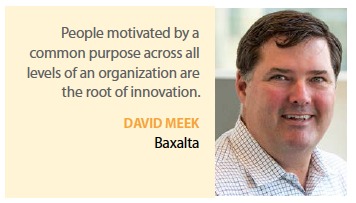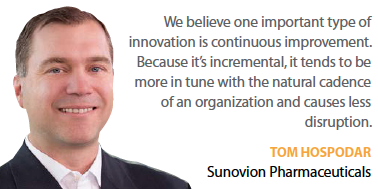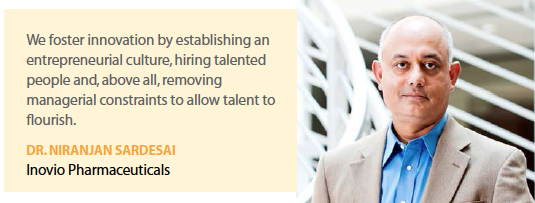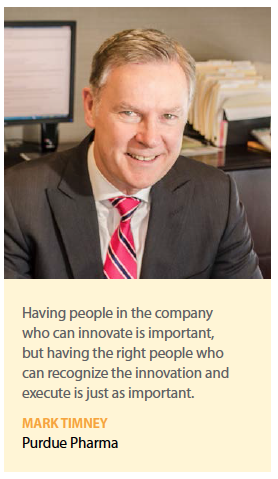 The culture of an organization, defined by top leadership, along with the personnel and resources allocated to new ideas, sets the tone for innovation.
The culture of an organization, defined by top leadership, along with the personnel and resources allocated to new ideas, sets the tone for innovation.
According to McKinsey, there are eight essential attributes — aspire, choose, discover, evolve, accelerate, scale, extend, and mobilize — that are present, either in part or in full, at every big company that’s a high performer in product, process, or business-model innovation.
Furthermore, since innovation is a complex, companywide endeavor, it requires a set of crosscutting practices and processes to structure, organize, and encourage it. These often overlapping, iterative, and nonsequential practices resist systematic categorization but can nonetheless be thought of in two groups. The first four essential attributes, which are strategic and creative in nature, help set and prioritize the terms and conditions under which innovation is more likely to thrive. The next four deal with how to deliver and organize for innovation repeatedly over time and with enough value to contribute meaningfully to overall performance.
 To be sure, they say there is no proven formula for success, but McKinsey analysts firmly believe that if companies assimilate and apply these essentials — in their own way, in accordance with their particular context, capabilities, organizational culture, and appetite for risk — they will improve the likelihood that they, too, can rekindle the lost spark of innovation.
To be sure, they say there is no proven formula for success, but McKinsey analysts firmly believe that if companies assimilate and apply these essentials — in their own way, in accordance with their particular context, capabilities, organizational culture, and appetite for risk — they will improve the likelihood that they, too, can rekindle the lost spark of innovation.
According to Ritesh Patel, executive VP, chief digital officer, Ogilvy CommonHealth Worldwide, innovation has to be part of the overall culture and DNA of the organization.
“I think where we stumble in healthcare is companies use excuses of regulatory or real-world evidence or endpoint data quality to hide behind what they could actually do if they really thought about making innovation a priority," he says. “There are some visionary CEOs, such as Joe Jimenez of Novartis, who are examining what the mission of the organization is, what their mantra and focus should be. It can’t just be about R&D, clinical trials, and the endpoints. It has to be about how to make somebody better. When this is the mission, then the question has to change to: what do we need to do differently to achieve that goal?"
Mr. Patel adds that, unfortunately, often the bigger the organization, the more siloed and dysfunctional it can be.
“The first thing companies need to do is try to break down as many of those silos as possible," he says. “The other way to encourage innovation, and what some big companies are doing, is building out innovation centers that then take two or three ideas that permeate through the organizations. Either approach needs senior leadership buy-in and is dependent on the company’s culture."
One company that has embraced the incubator concept is Johnson & Johnson, which has established JLABS to empower and enable science to reach the people who need it.
Melinda Richter, head, Johnson & Johnson Innovation JLABS, says to foster a culture conducive to successful innovation she believes in three Cs: creativity, collaboration, and community.
 “First is creativity; we shouldn’t be afraid to push limits in un-ventured areas, be bold; and ask for forgiveness," she says. “Next is collaboration. Innovation doesn’t happen in a vacuum. Work with your team and with other companies. Listen and learn from people who may bring perspectives different from your own. Third is community. The impossible seems possible when you’re surrounded by a community of people who are passionate about the same mission. Be inspired, get involved, accept a helping hand and pay it forward."
“First is creativity; we shouldn’t be afraid to push limits in un-ventured areas, be bold; and ask for forgiveness," she says. “Next is collaboration. Innovation doesn’t happen in a vacuum. Work with your team and with other companies. Listen and learn from people who may bring perspectives different from your own. Third is community. The impossible seems possible when you’re surrounded by a community of people who are passionate about the same mission. Be inspired, get involved, accept a helping hand and pay it forward."
Shideh Sedgh Bina, co-founding partner of Insigniam, says an innovative culture requires a leadership mandate.
“Innovation must be one of the top three measures that the executives and leaders are judged by, paid to explore, and incentivized to succeed," she says. “Companies need a culture where it’s okay for people to have divergent thinking, to be able to go broad and wide, and have ideas outside of what everyone has already converged around.
“There needs to be an environment where it’s okay for people to have unfeasible ideas that they then work on making innovative," she continues. “It’s a lot easier to take an idea that’s not feasible and make it innovative than to take a feasible idea and try to make it innovative. And then lastly, there’s got to be room for measures of success other than the traditional measures of completing a project within a budget and with a certain ROI or an internal rate of return."
Tom Hospodar, head, global office of strategic planning at Sunovion Pharmaceuticals, believes one important type of innovation is continuous improvement.
 “Because this process is incremental, it tends to be more in tune with the natural cadence of an organization and causes less disruption," he says. “But over time, small changes add up to have tremendous impact. In our global clinical development organization, we are building a culture of learning and empowerment to better foster this approach. Furthermore, we believe continuous improvement is an inclusive type of innovation where all employees can actively contribute. If everyone is willing to take that first small step we’ll continue to make extremely significant improvements to our business."
“Because this process is incremental, it tends to be more in tune with the natural cadence of an organization and causes less disruption," he says. “But over time, small changes add up to have tremendous impact. In our global clinical development organization, we are building a culture of learning and empowerment to better foster this approach. Furthermore, we believe continuous improvement is an inclusive type of innovation where all employees can actively contribute. If everyone is willing to take that first small step we’ll continue to make extremely significant improvements to our business."
David Meek, executive VP and president of oncology at Baxalta, says dedication to a common purpose across all levels of an organization is the root of innovation.
“We have a novel product governance model aimed at opening communication across functions such as R&D and commercial," he explains. “While members of these teams have extensive marketplace and oncology experience, the talk isn’t all shop. In oncology, open communication means the freedom to share and learn from true stories of cancer patients, friends, and family members. Innovation, in this case, is using a novel team structure and ethos to encourage storytelling that inspires empathy. Without that, there is no center to the phrase patient-centric."
 At Pfizer, the foundation of innovation embodies a corporate culture that includes a common innovation language to expedite knowledge sharing and progressive learning, says Linda Lohr, Ph.D., senior director of portfolio strategy, worldwide research & development, Pfizer.
At Pfizer, the foundation of innovation embodies a corporate culture that includes a common innovation language to expedite knowledge sharing and progressive learning, says Linda Lohr, Ph.D., senior director of portfolio strategy, worldwide research & development, Pfizer.
“This culture provides exposure to idea networks with diverse thinking to uncover and explore new ideas," Dr. Lohr says. “Innovation incubators and hubs encourage and reward breakthrough, value-added innovation. Rapidly testing and learning from novel concepts fosters agility so that the innovation process does not stymie the creative thinking process. The overall objective is to create new value for an organization and its customers by aligning the innovative idea with specific business drivers and strategic objectives."
Mark Timney, CEO of Purdue Pharma, is creating a company culture in which employees feel empowered and, ultimately accountable, for taking responsible risks.
“Leaders need to foster an environment in which questioning traditional ways of doing things and relentlessly seeking to improve upon them, even discontinue doing them, is just part of everyone’s day job," Mr. Timney says. “Innovation needs to be in the culture across the entire company, because it’s not just R&D’s job to innovate — not anymore. Having people in the company who can innovate is important, but having the right people who can recognize the innovation and execute is just as important."
Brent Saunders, CEO and president of Allergan, concurs that culture is key to building a company that powers new ideas, and it begins with leadership.
“A CEO must be the chief culture communicator, spending time with employees and customers to convey key values with both humility and boldness, and receive feedback regularly," he says. “A bias for action and acting fast, coupled with accountability and support, are critical; if failure is accepted as a part of the process, employees will feel empowered to think boldly and push boundaries in unprecedented ways. Employees should understand that being bold provides a competitive edge and looking beyond the organization’s own walls for inspiration fosters collaboration and drives innovation."
Dr. Niranjan Sardesai, chief operating officer at Inovio Pharmaceuticals, is driving innovation in his organization by fusing science with an opportunistic mindset linking innovative product development with strategic partnering and M&A/divestiture of assets.
“By establishing an entrepreneurial culture, hiring talented people and, above all, removing managerial constraints we allow talent to flourish," Dr. Sardesai says. “With our key product innovations in the area of optimized DNA design and efficient DNA delivery, our research efforts are leveraging the power of genomics to unlock the promise of DNA-based therapies in both population-based settings as well as personalized medicine in the fight against cancer and challenging infectious diseases."
Yuval Cohen, CEO of Corbus Pharmaceuticals, is taking his company’s commitment to innovation beyond the science and is embracing social innovation and providing his team members with the opportunity to give back.
“Every one of our team members shares a passion for improving the lives of patients suffering from rare inflammatory diseases, and this commitment extends beyond our working environment and into participating in activities with patient advocacy groups such as fun walks, bike rides, annual galas, etc.," he says. “We find that this type of engagement is an incredible driving force for innovation and productivity." (PV)


















